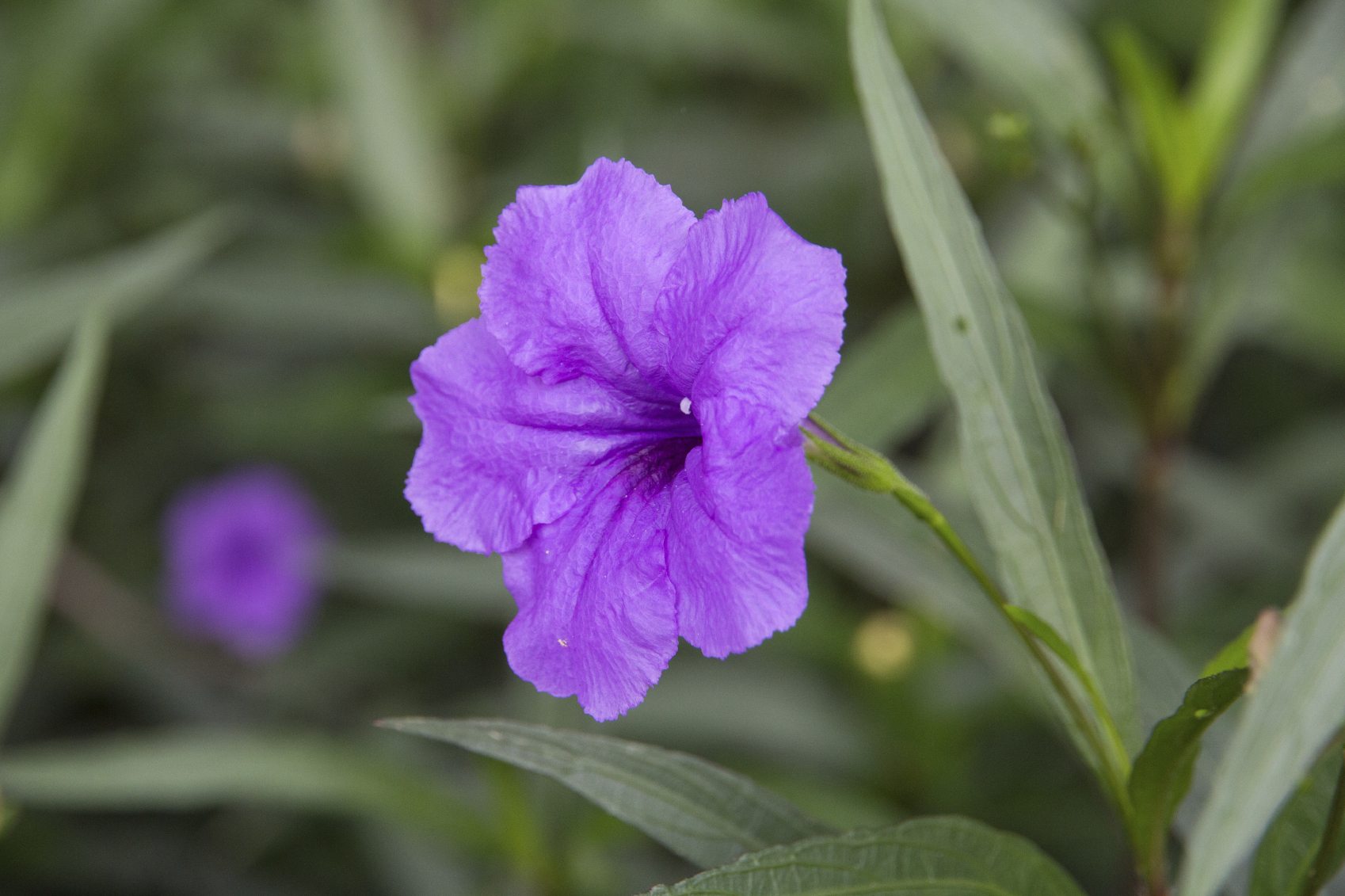Is Ruellia Invasive: Tips On How To Get Rid Of Mexican Petunias
Pretty Mexican petunia, or Ruellia, has been designated as invasive in 9 states. Be sure to buy the right cultivars.

Caroline Bloomfield

Ruellia, also known as Mexican petunia, is one of those annoying little plants that walks the line between being a beautiful ornamental and an incredibly noxious weed.
Lawn and garden maintenance can be one daunting task after another, especially if you’re struggling with plants that keep popping up where they’re not wanted. These plants can be defeated in the home landscaping, but it takes a great deal of patience to knock them back.
Is Ruellia Invasive?
Although plenty of gardeners have cultivated Ruellia brittoniana over the years, it has since escaped home gardens and become classified as an invasive plant in nine states, stretching from South Carolina to Texas.
Due to its adaptability and rapid reproduction, the Mexican petunia has managed to supplant native species in many areas and across several types of natural communities.
If you want to cultivate this plant, it’s still okay to do so, provided you purchase sterile specimens from your nursery. “Purple Showers,” “Mayan Purple,” “Mayan White,” and “Mayan Pink” are common varieties that will cause fewer problems in the landscape. They still require careful disposal of clippings and cultivation, however, because even the sterile types can escape and repopulate using their rhizomes.
How Can I Kill Mexican Petunias?
If you live in one of the nine states most affected by Ruellia, you’re probably wondering how to get rid of Mexican petunias. Mexican petunia removal requires vigilant attention to the garden or lawn where they’re a problem and it may become a long-term project.
Since the seeds of the Mexican petunia can germinate for years after the adults are gone, it’s a battle you’ve got to really commit to. Although pulling Mexican petunia can work for a few small plants, if you fail to dig the whole root or miss a sprout, you’ll be doing it all again soon.
Sign up for the Gardening Know How newsletter today and receive a free copy of our e-book "How to Grow Delicious Tomatoes".
Stay With It
Cut the plants back by hand and carefully dispose of the vegetation so that it doesn’t have a chance to regrow. Since you’ll only be destroying the top part of the plant, you’ll need to recut it every time it starts to leaf out to force it to use its energy stores and run itself out of food.
Consult with your local university extension agency about how to kill Ruellia back to the root. Your garden center can tell you if there is an organic method or solution that will kill the plant and its roots without using harsh chemicals. Again, it is a commitment that may take a long time, but it is worth the struggle.

Kristi Waterworth was a regular contributor to Gardening Know How for many years, answering countless queries on plant pests and diseases.
- Caroline BloomfieldManager of Marketing Communications